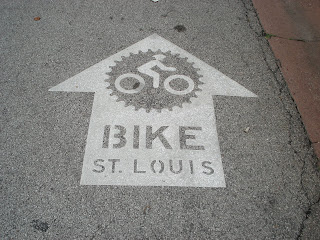In this essay, John Cooley discusses Faulkner's evolving and ultimately limited conceptions of race:
As Bernard Bell points out, most of Faulkner's African American characters represent stereotypic categories: the tragic mulatto, the Mammie, the faithful retainer, the rebellious marginal man. Bell and other African-American critics have also observed that Faulkner's blacks are defined in relationship to his whites, and that they frequently express white, rather than black, cultural values. White life and racial perspectives remain the primary orbit of action and thought for black characters, rather than attention to their own goals and strategies. Faulkner's blacks even live in a proxy relationship to some of his white characters, serving and protecting them, saving their lives if not their souls.
Having just finished The Unvanquished, this analysis seems very true to me. The Sartoris slaves are faithful retainers, sticking with their white owners through the war and beyond, even collaborating with them to defraud the occupying Union Army. In Col. Sartoris's estimation, Ringo the slave is a bit smarter than Bayard, the colonel's own son—yet it's of course Bayard who goes off to the university to earn a law degree, and Ringo who uncomplainingly stays behind, content to serve.
The novel begins with one of the slaves, Loosh, exulting in the Union Army's advance. Loosh, we later find out, is literate, and even taught Bayard how to read (Ringo refused to learn). Not surprisingly, Loosh is able to articulate his right to freedom and repudiates his loyalty to the family:
I don't belong to John Sartoris now; I belongs to me and God.... Let God ax John Sartoris who the man name that give him to me. Let the man that buried me in the black dark ax that of the man who dug me free.
He's a Frederick Douglass in backwoods Mississippi. Nevertheless, the entire spirit of the novel (as well as all of the characters, black and white) is against Loosh. He's presented as a dangerous and foolish ingrate. And eventually he ends up serving at the Sartoris estate again after the war.
The novel presents a version of Southern history in which blacks fleeing their former slavemasters are compared to herds of animals, blindly seeking a salvation that will never come. In which a heroic pillar of the community (and later elected official) commandeers an election by killing two "carpet-baggers" (ancestors of Joanna Burden, who'll be murdered by Joe Christmas in Light in August) who had the gall to organize blacks to vote.
Reading this novel, which in some ways I really liked, made me reflect on how well, by comparison, Mark Twain is able to create, in Jim in Huck Finn, an African American character with a mind and emotions of his own. Though Huck of course is only intermittently aware of Jim's humanity, Twain's genius is that he allows the perceptive reader to see what Huck does not. And, moreover, Twain's satire in that novel has at its core a point that The Unvanquished never quite gets around to suggesting: that slavery was wrong.
What's great in The Unvanquished, and in Faulkner generally, is the inventiveness of his style, the grandeur and sweep of his imagination, the way his novels and stories flesh out the lives of a people over the course of more than a century, the nuance of character (white characters, at least) the intricacy of plot, and the humor.
The novels of Charles W. Chesnutt, whom I've been reading quite a bit of this summer, can't measure up to Faulkner in these categories. Yet Chesnutt offers an exquisitely precise portrait of race and power in the post-bellum and post-Reconstruction South, one that is like a bucket of bracingly cold water after Faulkner's balmy grandiloquence. For example, Chesnutt's novel The Marrow of Tradition, a fictionalized portrayal of the 1899 riot in Wilmington, North Carolina, shows the destructiveness of the type of white supremacist attitudes that Faulkner takes for granted.
The Chronology in the back of my Library of America edition notes that, as the civil rights movement swept through the South, Faulkner wrote and spoke on more than one occasion about the necessity of teaching blacks "the responsibility of equality," a phrase that calls to mind the Battle Royal chapter of Invisible Man, in which the narrator, after having been bloodied in a brutal fight with nine other young men, is forced to give a speech before the prominent white men of his town. He's shouted down violently when he accidentally talks about "social equality" instead of "social responsibility."
Part of me wants to disagree with W. E. B. Du Bois's famous assertion that all art is propaganda, but on the other hand, when I compare the works of Chesnutt and Faulkner—or when I read Faulkner in the midst of an extended survey of African American history and literature—I understand where Du Bois is coming from. I see very different versions of reality, with concomitantly different political consequences.


















